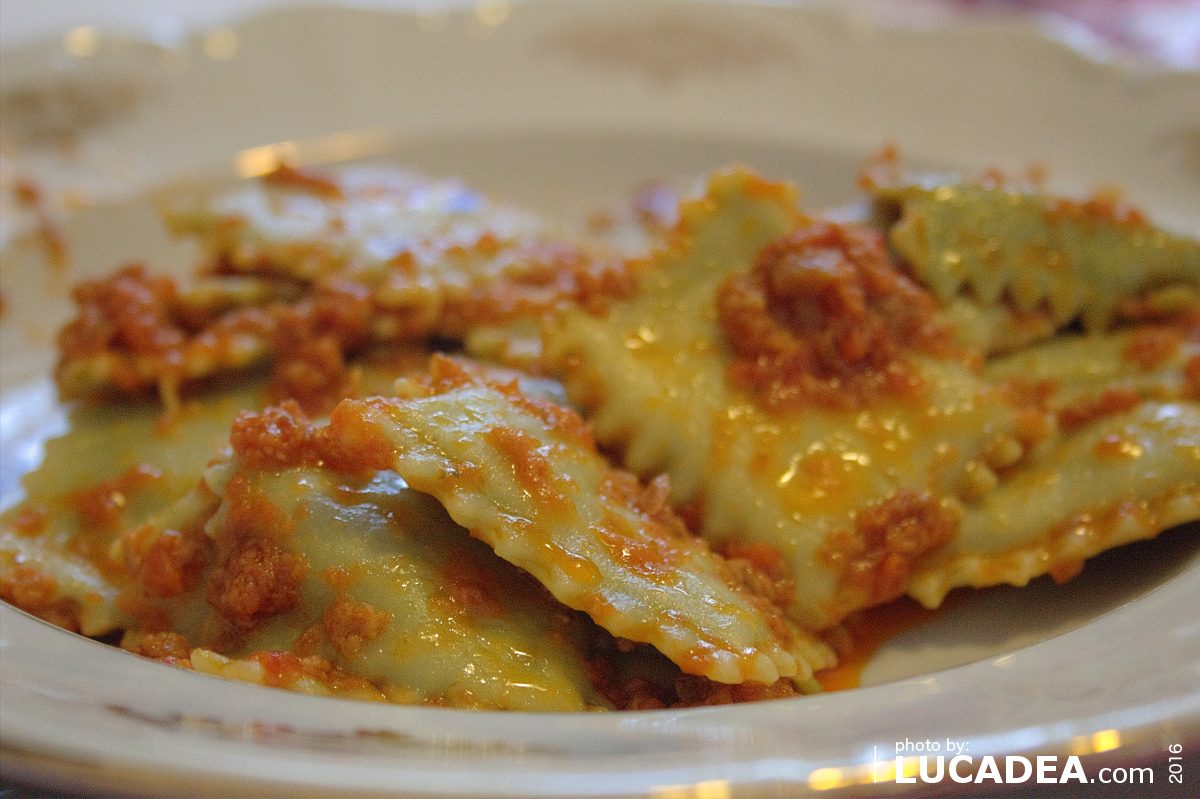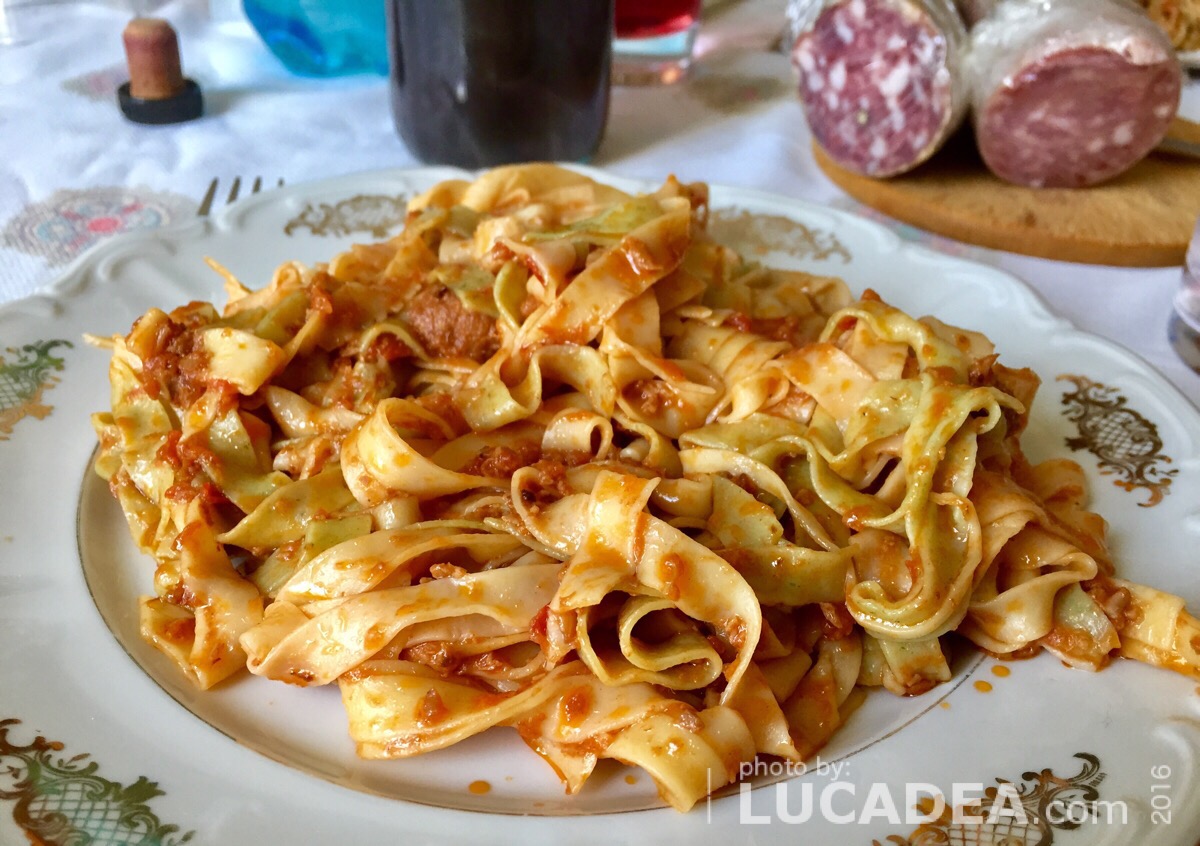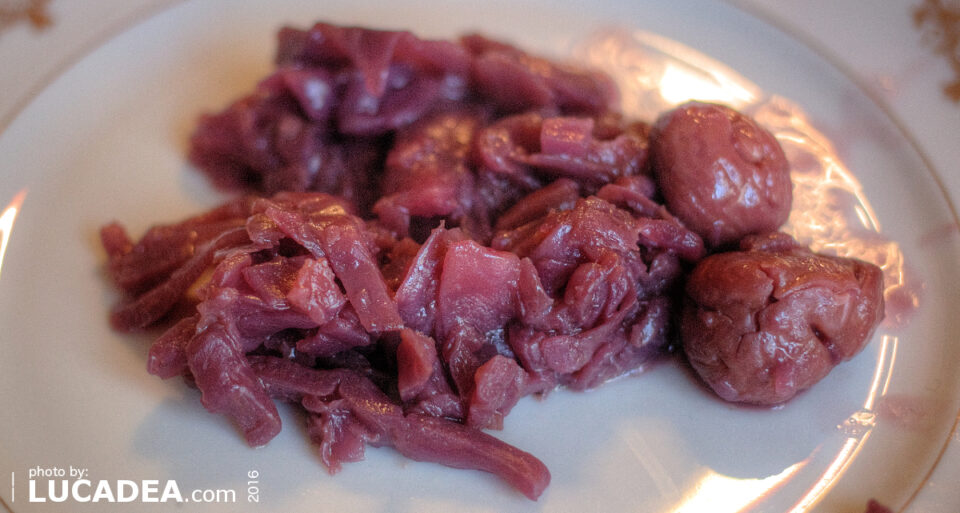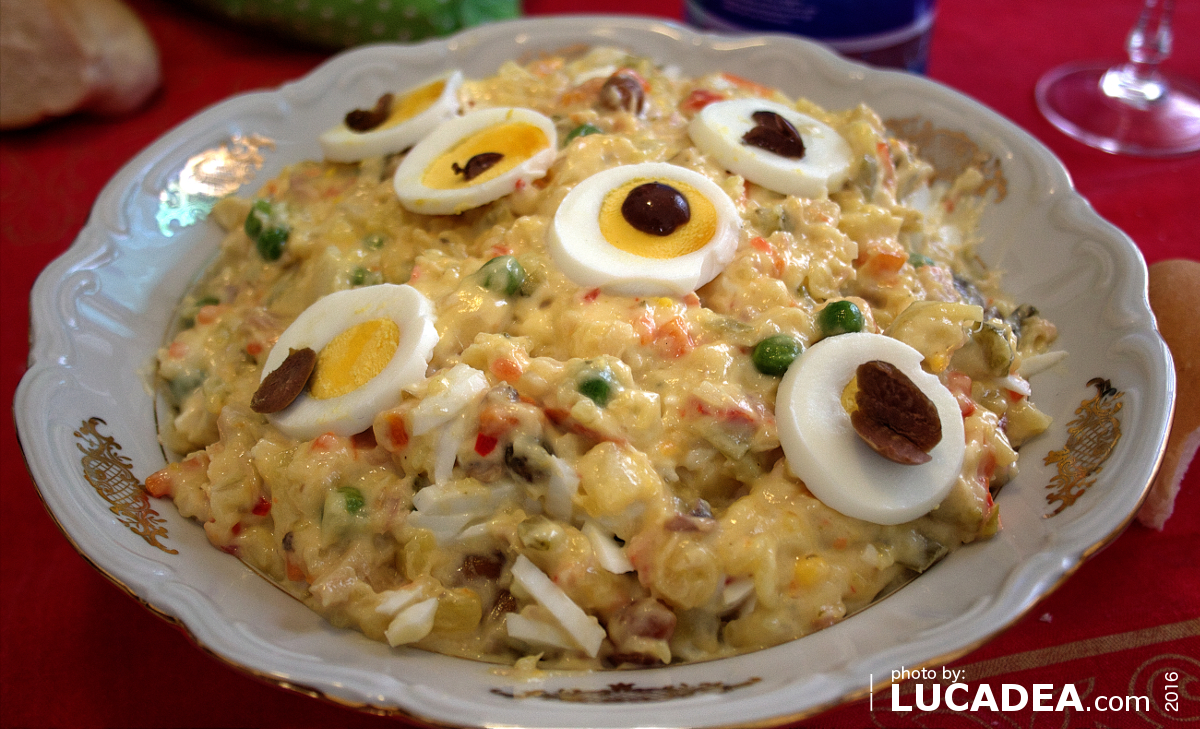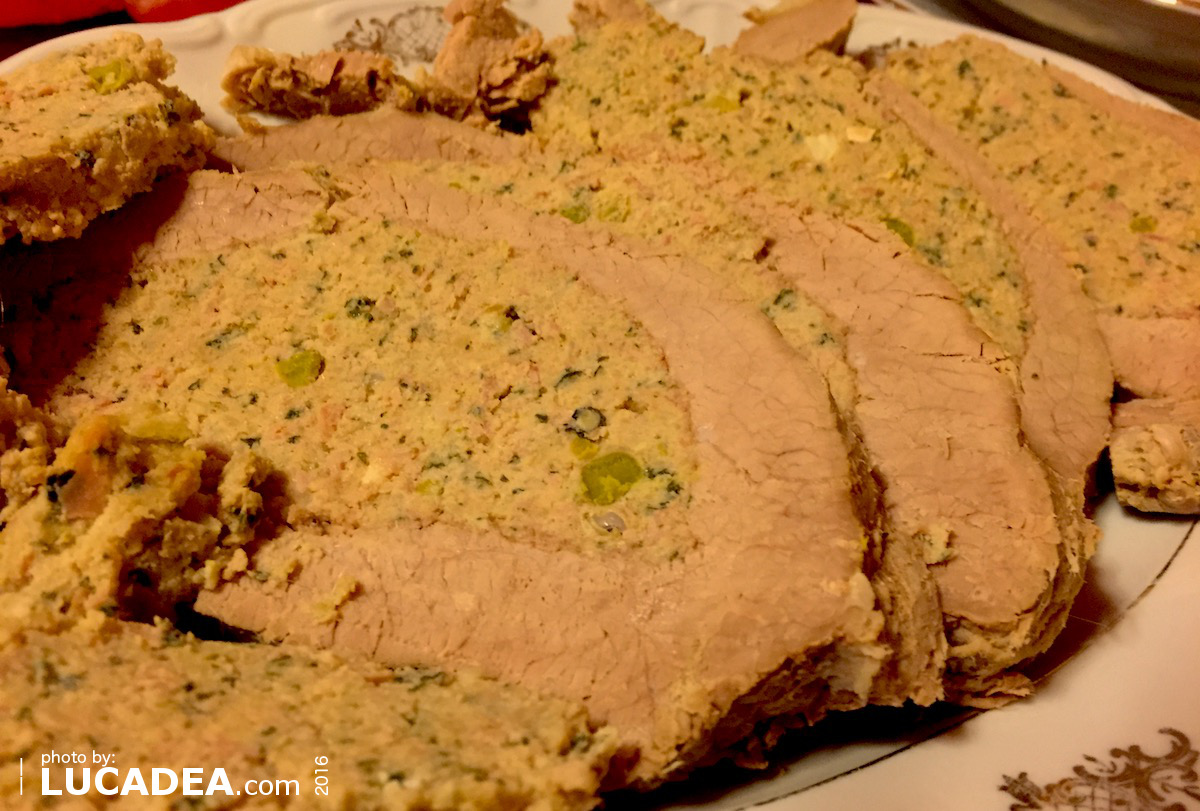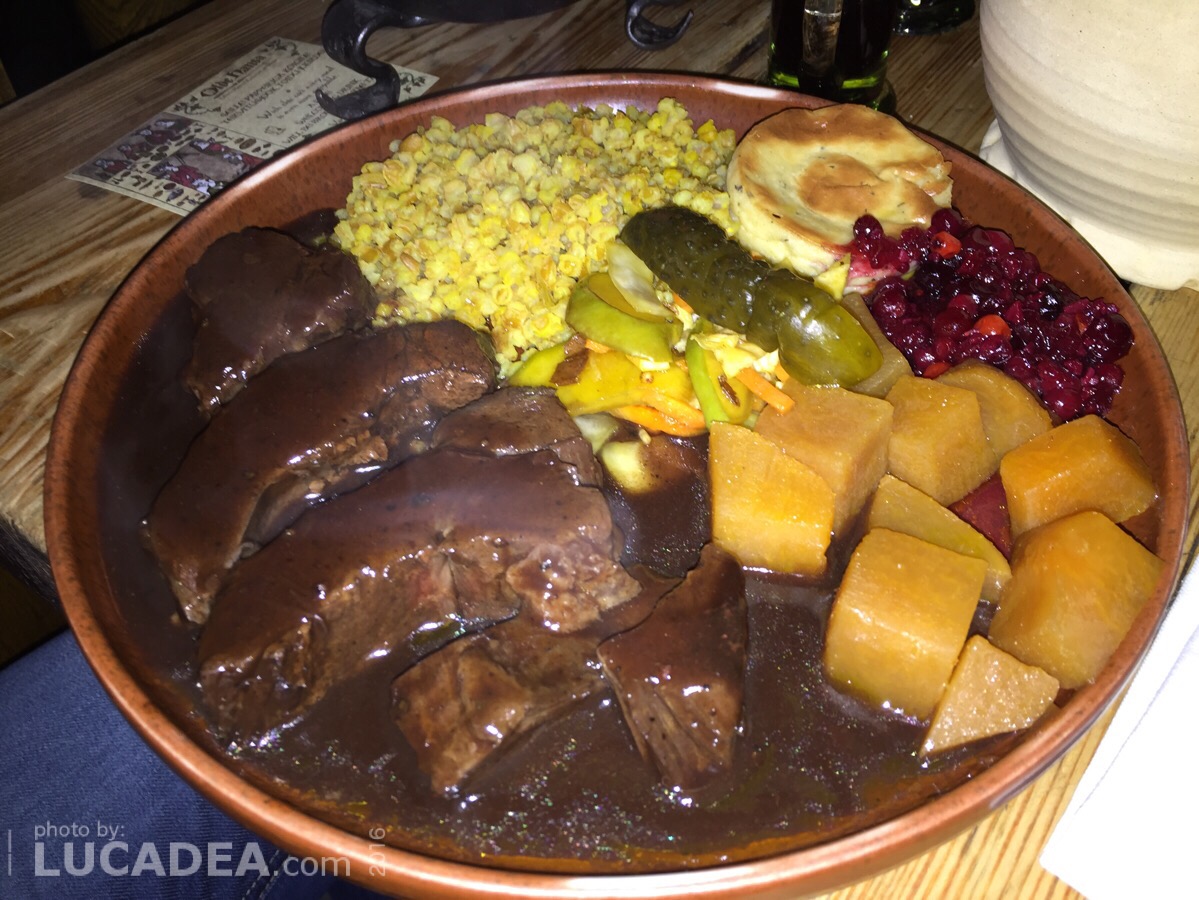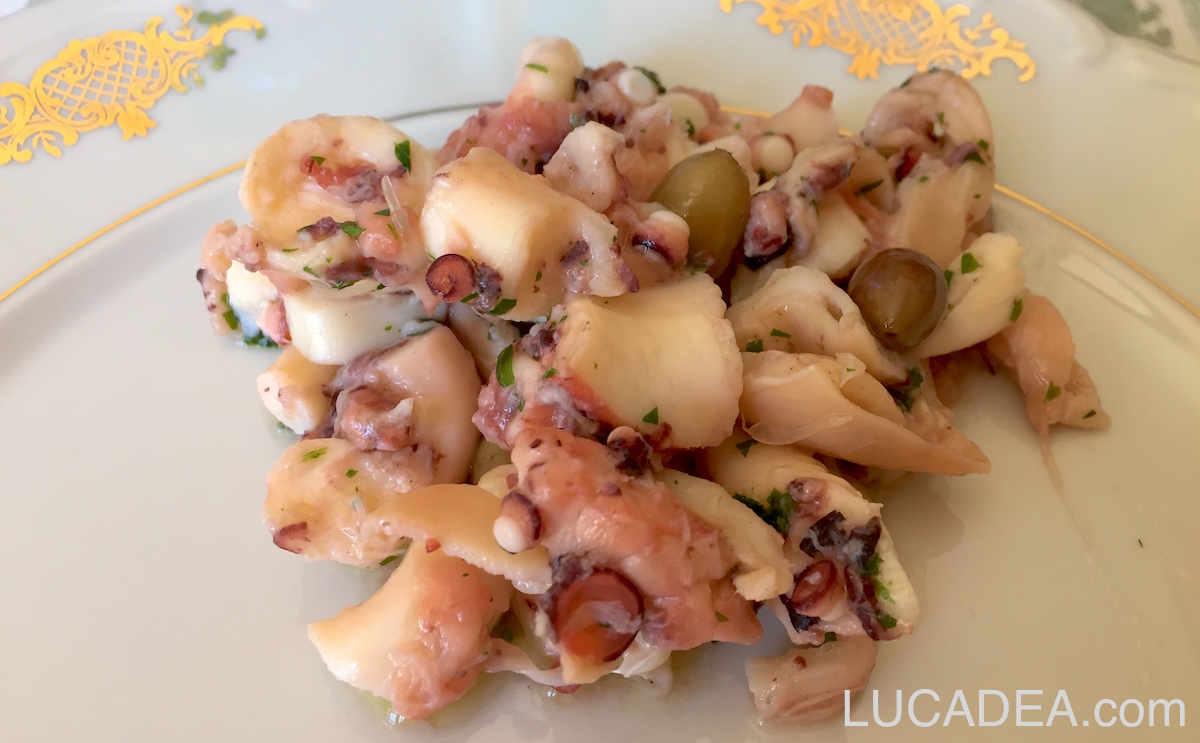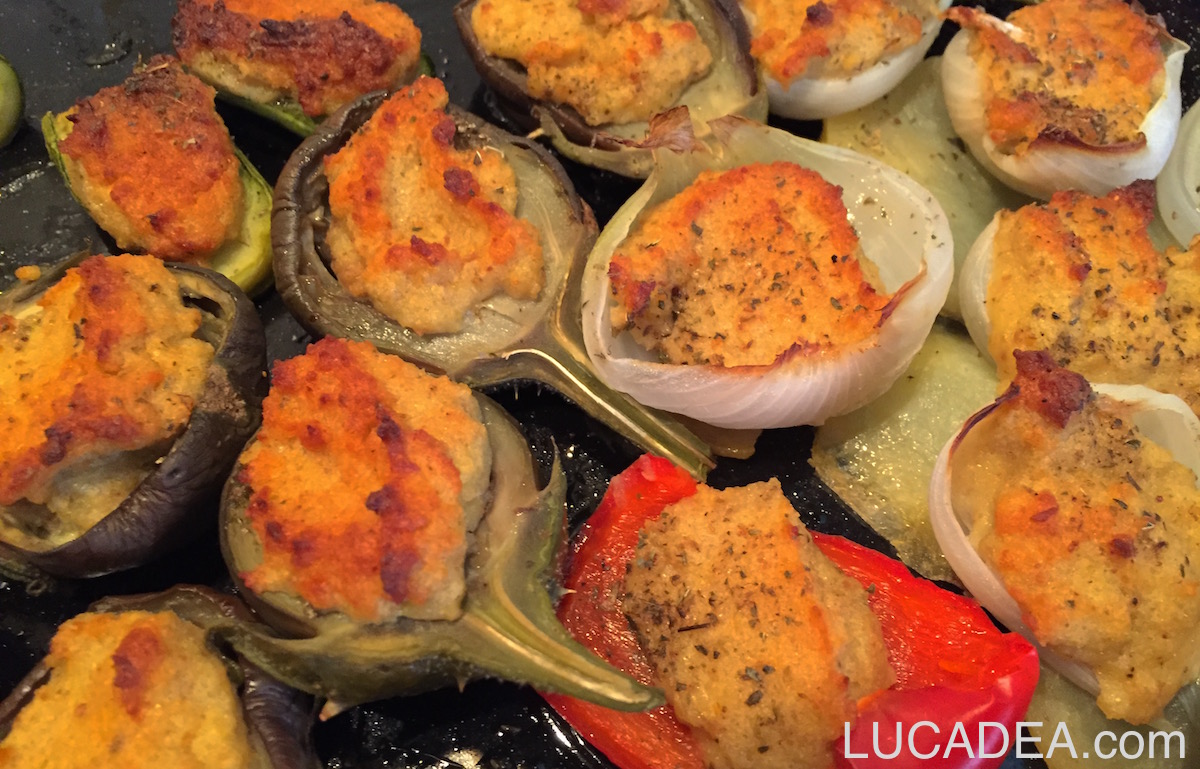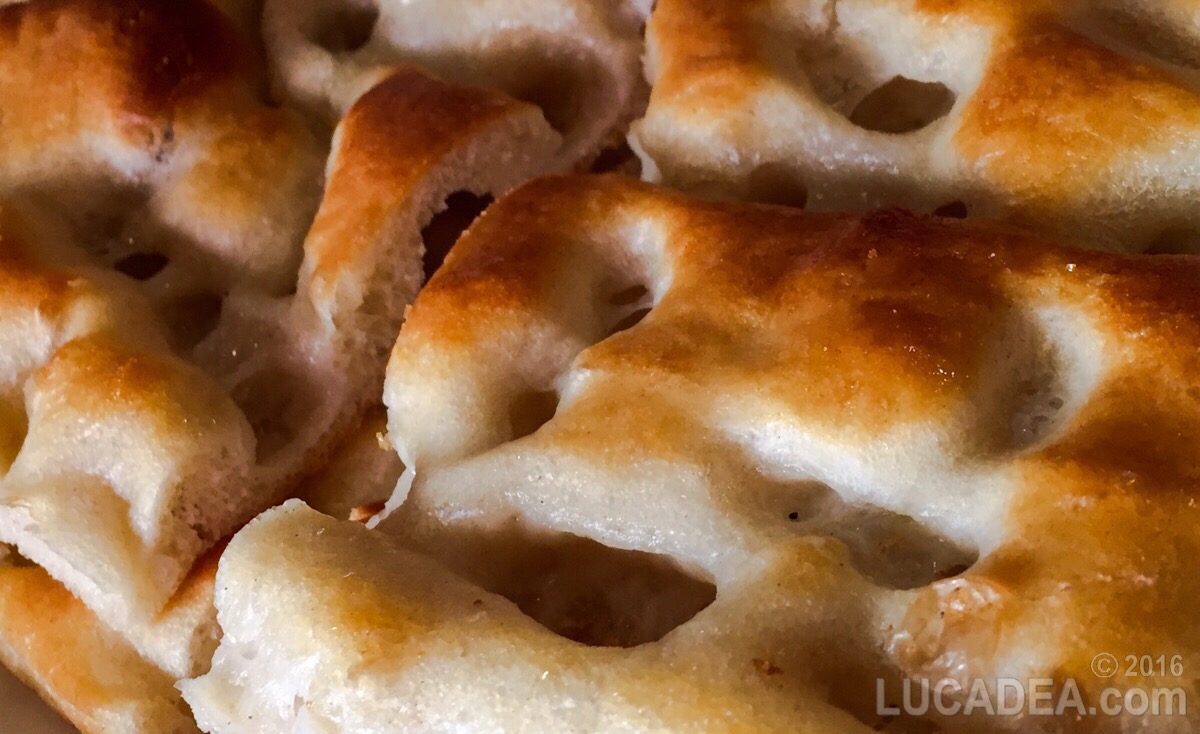Tris of pasta alla genovese.
A plate of typical pasta samples from Genoa: trofei with pesto alla genovese, pansotti with walnut sauce and ravioli with ragù. All three with a sprinkling of grated parmesan.
What more could you ask for from a table?
Add your own comment or go to the bottom of the site to read what other visitors have written.
Photo taken with iPhone 6.
Ligurian cuisine is made up of traditional dishes from Liguria, a region that includes ingredients linked both to local production (such as preboggion, a mixture of wild herbs) and to imports from areas with which Ligurians have had frequent contact over the centuries (such as Sardinian pecorino, one of the ingredients of pesto).
Continue and learn more on Wikipedia


